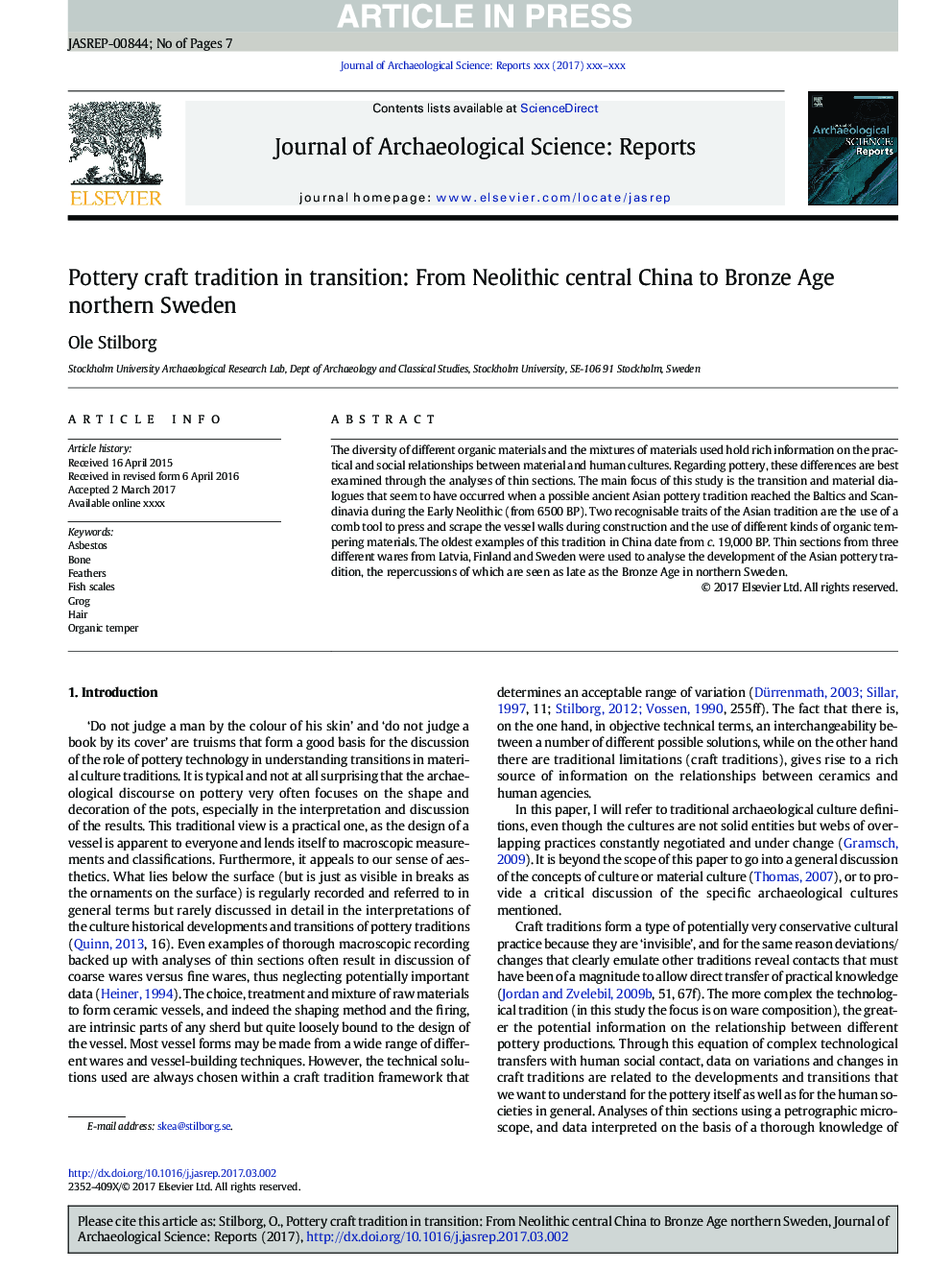| Article ID | Journal | Published Year | Pages | File Type |
|---|---|---|---|---|
| 7445081 | Journal of Archaeological Science: Reports | 2017 | 7 Pages |
Abstract
The diversity of different organic materials and the mixtures of materials used hold rich information on the practical and social relationships between material and human cultures. Regarding pottery, these differences are best examined through the analyses of thin sections. The main focus of this study is the transition and material dialogues that seem to have occurred when a possible ancient Asian pottery tradition reached the Baltics and Scandinavia during the Early Neolithic (from 6500Â BP). Two recognisable traits of the Asian tradition are the use of a comb tool to press and scrape the vessel walls during construction and the use of different kinds of organic tempering materials. The oldest examples of this tradition in China date from c. 19,000Â BP. Thin sections from three different wares from Latvia, Finland and Sweden were used to analyse the development of the Asian pottery tradition, the repercussions of which are seen as late as the Bronze Age in northern Sweden.
Keywords
Related Topics
Social Sciences and Humanities
Arts and Humanities
History
Authors
Ole Stilborg,
